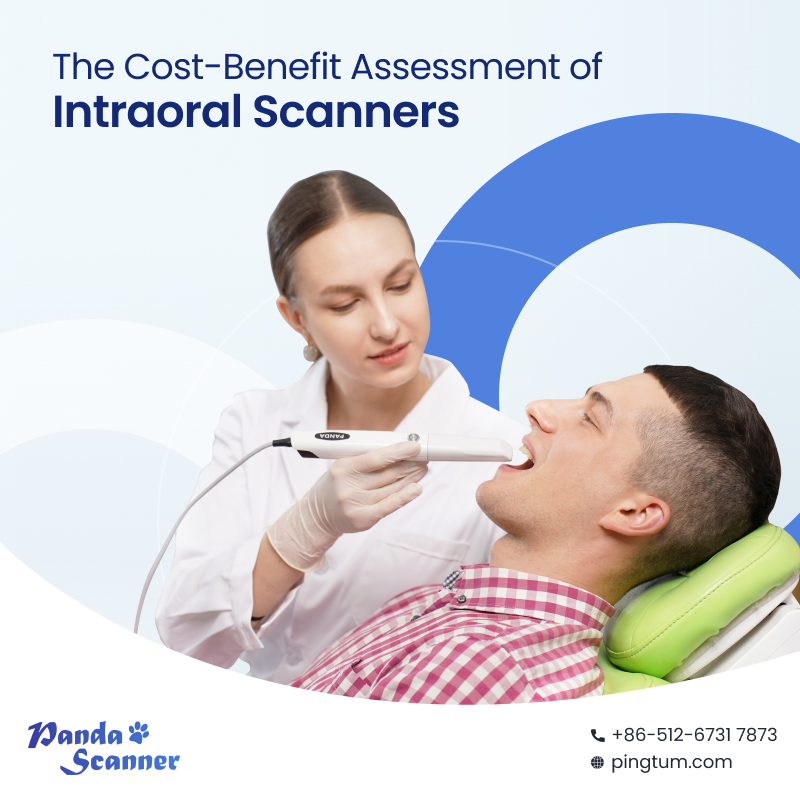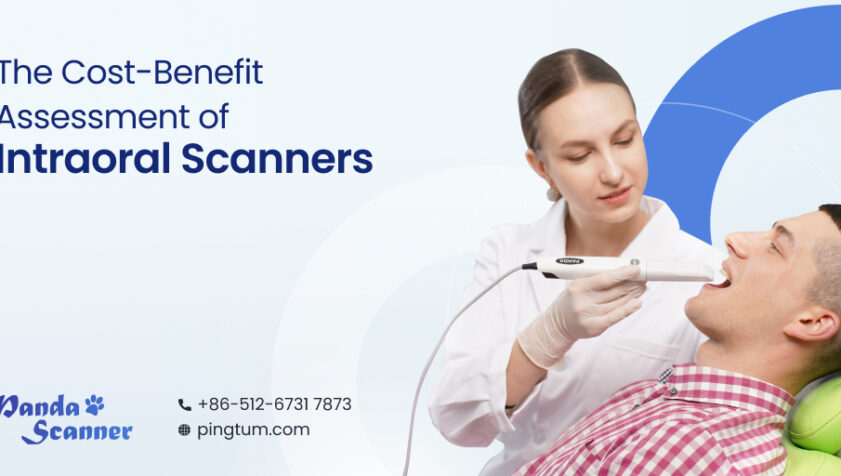The discipline of dentistry has seen a substantial movement towards digital technology in recent years, and one such invention that has received a lot of attention is the intraoral scanner. These little gadgets have transformed the way dental practitioners take dental impressions, replacing the conventional, messy, and inconvenient technique with a streamlined digital workflow.
However, like with any investment, dental practises must weigh the cost-benefit ratio before adopting intraoral scanners into their operations. That’s why we are going to discuss the cost-benefit analysis of intraoral scanners, emphasising the benefits they provide to dental practises and their possible return on investment.

Comfort for Patients
Traditional dental impressions can be painful and stressful for certain individuals. By removing the need for messy imprint materials, intraoral scanners provide a more comfortable and patient-friendly experience. Patients like the scanning process’s simplicity and efficiency, which leads to enhanced patient satisfaction and loyalty. Patients who are satisfied with their care are more likely to recommend others to the practise, which can increase the patient base and income in the long run.
Better efficiency
The huge improvement in efficiency and productivity inside the dental practise is one of the key benefits of adopting intraoral scanners. In contrast to traditional impression procedures, which sometimes require many attempts and time-consuming modifications, intraoral scanners deliver rapid and precise digital impressions in a matter of minutes. This improved process enables dental practitioners to see more patients in a day, enhancing the practise’s total productivity.
Reduced Cost
While the initial cost of adopting intraoral scanners may appear high, dental practises can save money in the long run. There is no need for physical materials like imprint trays, alginate, or stone models with digital impressions. These reductions in material prices might add up over time and add up to considerable savings for the practise. Furthermore, the possibility of retakes due to errors in traditional impressions is considerably reduced, resulting in extra savings.
The procedure of obtaining imprints is made easier by intraoral scanning, which eliminates the need for specialised workers. This may lead to a reduction in labour costs or the reallocation of workers to duties with higher added value.
Improved Treatment Planning
Intraoral scanners provide very precise digital models for dental specialists to utilise in thorough treatment planning. These digital models are readily changed and analysed, allowing for improved visualisation and patient communication. Dental practitioners may better demonstrate prospective treatment results, clarify processes, and boost case acceptance. The ability to provide patients with a digital depiction of their treatment journey frequently leads to better case acceptance rates and income for the practise.
Saves Time as It Allows a Collaborative Approach
With an intraoral scanner like the Panda P2 scanner, dental practitioners and dental laboratories can communicate digitally in real time. Instead of sending actual impressions, digital data may be quickly shared with dental professionals, shortening turnaround time and lowering shipping expenses. Dental laboratories can begin working on restorations or aligners much more quickly, leading to faster treatment completion and less chair time for the patient.
Marketing and Differentiation
Utilising cutting-edge technology, such as intraoral scanners, can distinguish tyour practise from rivals. Modern practises are frequently valued and sought after by patients, perhaps bringing in more clients and raising income.
Long-Term Investment
Although purchasing an intraoral scanner has an upfront cost, it is a long-term investment that can result in significant cost savings over time. Improvements in process efficiency and lower labour and material costs can result in a sizable return on investment (ROI).
Inventory Management Savings
Intraoral scanners eliminate the need for actual imprint trays and materials, which lowers the cost of inventory control and storage for these items.
Conclusion
While the initial expenditure on intraoral scanners may seem higher than traditional alternatives, the long-term advantages and ROI for dentistry practises are apparent. Intraoral scanners provide a variety of benefits that benefit the practise’s bottom line, from higher efficiency and production to improved patient experience and treatment planning. Dental practises can make an informed decision to integrate intraoral scanners into their workflow by conducting a thorough cost-benefit analysis and considering factors such as improved efficiency, reduced material costs, enhanced patient experience, and streamlined collaboration. This will ultimately set them up for success in the digital era of dentistry.






